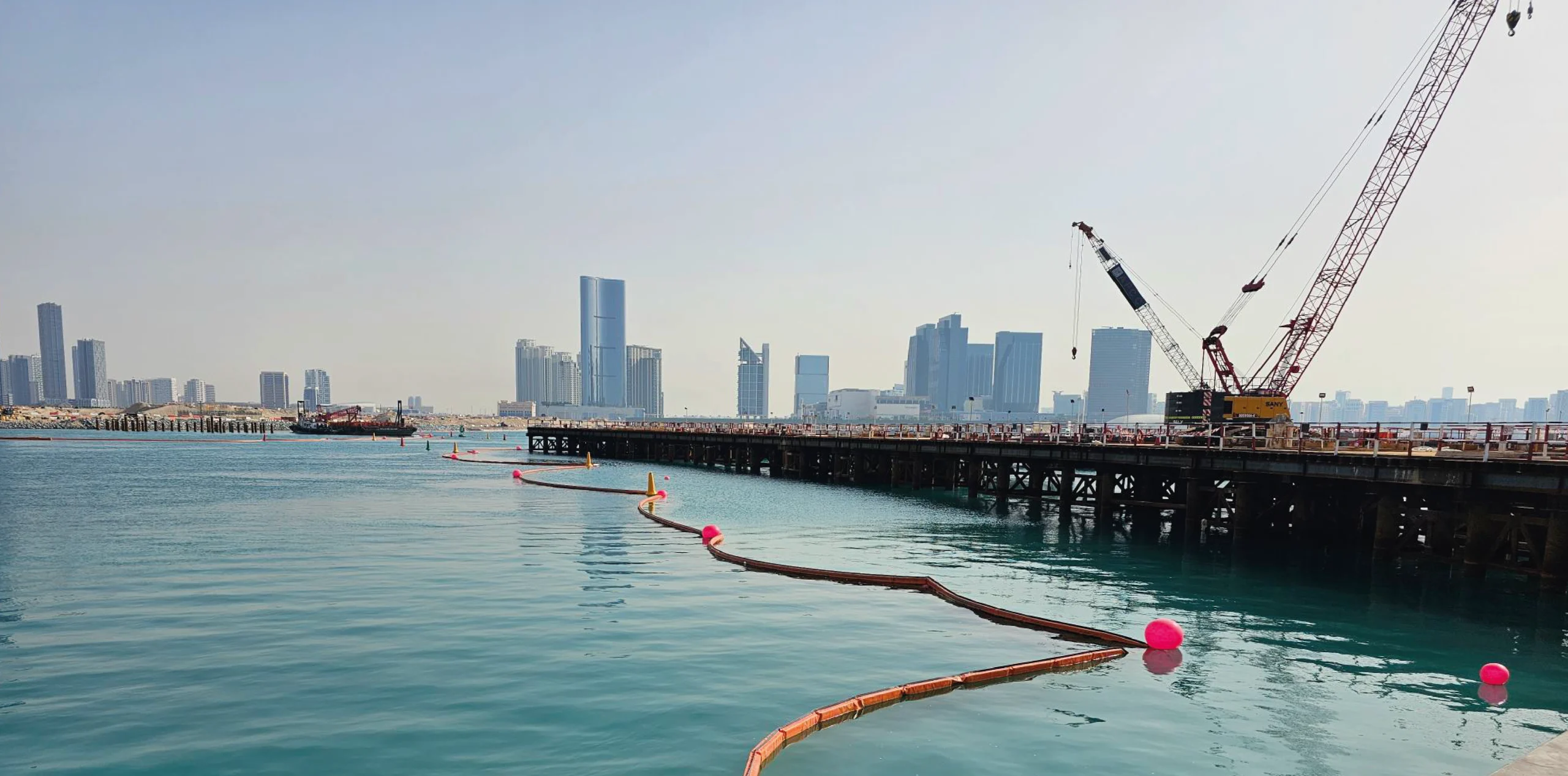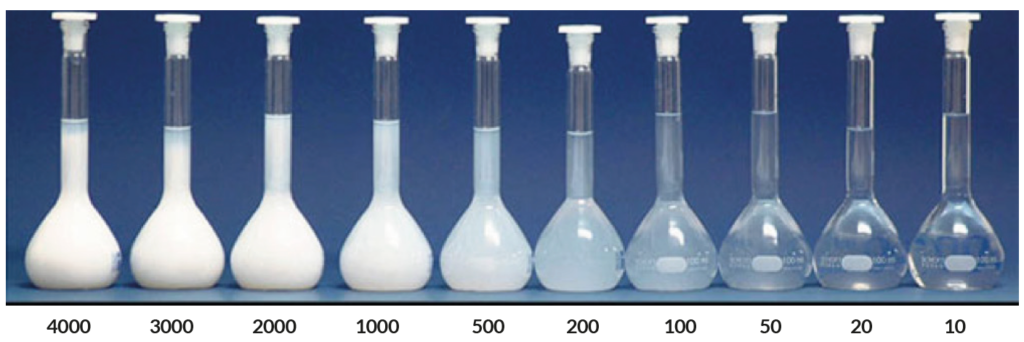
Silt curtains, also known as turbidity curtains or turbidity barriers, are vertical barriers deployed in water. They are designed to manage and contain fine particles, such as sediment and silt, released during activities like marine construction, dredging or reclamation. These activities elevate turbidity levels. Today, silt curtains serve multiple purposes, including dewatering, outfall containment, intake protection and other sediment control applications. This blog post delves into the purpose of silt curtains, how silt curtains work, the role of turbidity in sediment control, and common misconceptions.
The primary purpose of silt curtains is to create a controlled environment where silt can settle out of the water column. By providing a contained area, silt curtains reduce the spread of silt and limit its movement, to protect the marine environment.
While silt curtains are not designed to impound water completely, they effectively minimize the dispersion of silt outside the containment area by slowing down the water flow within the contained area. It is reasonably expected, however, that some silts will move underneath the silt curtains. The controlled flow allows silt to settle more efficiently and reduces the likelihood of resuspension of particles.
Silt curtains are particularly effective in shallow water environments (depths less than 10 meters) and locations with relatively minor water flow (<0.5m/s). In deeper water, isolating areas with increased turbulence from currents and waves and higher water velocities becomes more challenging. However, this can be controlled through proper engineering and design of configurations, as well as complementary mitigation measures.
Turbidity measures the optical quality of water, describing how clear the water is and the extent to which particles cause cloudiness. This cloudiness disturbs sunlight penetration, leading to light attenuation. Turbidity can occur naturally or result from activities such as marine construction, dredging and reclamation, which increase the turbidity of water near these operations.
Turbidity is often expressed in Nephelometric Turbidity Units (NTU). As the volume of suspended particles increases, NTU rises, indicating higher turbidity levels.
Increased turbidity affects sunlight penetration, causing light to scatter and reducing the depth it can reach in the water column. This scattering inhibits photosynthesis in marine flora and corals, negatively impacting the marine environment. Resuspended matter is commonly measured as Total Suspended Solids (TSS) in milligrams per liter.
The rate at which sediments settle depends on particle size, as shown in the table below. Finer particles take longer to settle. The table provides an indication of how long it will take for particles to settle within a containment area. Note that the table excludes the effect of currents, waves or other disturbances in the water that might resuspend fine particles, extending the settlement time. However, it can be used as a guideline for how long to leave silt curtains installed after marine construction, dredging or reclamation before removing or relocating it.
| Type | Particle Size [mm] | Settlement Time [in m/s] | [in hrs] | |||
| 1m | 2m | 5m | 10m | |||
| Sand | 0.06-2.0 | 0.01 | 0.0 | 0.1 | 0.1 | 0.3 |
| Silt | 0.002-0.06 | 0.001 | 0.3 | 0.6 | 1.4 | 2.8 |
| Clay | <0.002 | 0.0001 | 2.8 | 5.6 | 13.9 | 27.8 |
| Fine Clay | <0.002 | 0.00001 | 27.8 | 55.6 | 138.9 | 277.8 |

We recommend reading: Facts About: Turbidity & Dredging – An Information Update from the International Association of Dredging Companies (IADC).
A common misconception is that silt curtains need to be completely impermeable to be effective or that the fabric’s opening size must be smaller than the suspended particles. The standard test for geotextile permeability has no relevance in the application of silt curtains as described below:
Materials used for silt curtains should be strong enough to withstand environmental conditions. One standard test for assessing the Apparent Opening Size (AOS) of geotextiles is ASTM D4751. This test uses glass beads of known diameters to determine the opening size of the fabric by measuring how much of the beads pass through. However, this method has several limitations, including:
For silt curtains in marine environments, these issues are compounded by factors such as:
In terms of particle size, sand is classified as size between 0.06mm-2.0mm, silt between 0.002mm-0.06mm, and clay less than 0.002mm. Basing silt curtain material selection solely on permeability assumptions defined by ASTM D4751 can lead to incorrect conclusions that these particles will pass through the fabrics. This approach may result in the selection of weaker fabrics.
Selecting silt curtain materials should focus on tensile strength and durability rather than permeability alone. Ensuring that the fabric is robust enough to handle the specific environmental conditions will guarantee effective performance and prevent potential failures.
The overall effectiveness of a silt curtain has very little to do with the permeability of the curtain fabric. Instead, it is more influenced by the strength of the material, the connections between panels, the overall layout and configuration of the curtain, and how well it has been installed and maintained.
Contact us today to learn more about choosing the right silt curtain for your project and ensuring effective sediment control.
📷 Top photo: Ecobarrier Silt Curtains ESC-150-2 in action at Al Reem Island 7&8 Bridge Project, Abu Dhabi, UAE